Last fall, if you were in Houston, you may have seen Nestor Topchy’s exhibit, The Iconic Portrait Strand at the Menil Museum. It was a collection of 124 tiny portraits, painted in a style that resembles Orthodox Christian icon painting. Topchy has been painting these icon-like paintings since about 2004, going by the chronology on Topchy’s website. In about the same year, Topchy started hanging pysanky-style eggs from some of his icon-like paintings. This makes me wonder what was going on with him in 2004.
Topchy up until that point had been a thoroughly modern artist working in contemporary idioms. His earliest work that I know are large spherical sculptures. He was doing these when he moved to Houston to get his MFA and has returned to spheres from time to time in his artistic career. It seems that his experiences at Commerce Street Artists Warehouse encouraged him to explore the idea of a social sculpture, which he did with his two Rice Military neighborhood live-work installations, Zocalo and TemplO. Over the years, I’ve seen many Nestor Topchy performances.
But it seems that sometime around 2004, Topchy’s personal ancestry made its way into his art. Topchy is a first generation Ukrainian-American. Topchy told me:
My father was in Ukraine at the end of World War II when Stalin. . . when there was persecution of Ukrainians by Russians and then Germans came in. So my father ended up in a German work camp with his family. When the tide receded, he was in Germany as a displaced person. He started studying and he was going to get his PhD in Bonn, and then he moved to Canada with his family. They thought that the Russians were going to come back. So he went to Canada like many Ukrainians and he met my mother there. Then he got work with Bell Labs in the 1960s in New Jersey. So he moved to New Jersey and he had a green card, and he was working. I was born in New Jersey.
Pysanky are Ukrainian decorated eggs. “The word pysanky comes from the Ukrainian word pysaty (писати), ‘to write.’ Pysanka is the singular and pysanky is the plural,” according to the Center for Russian, East European, & Eurasian Studies. Using beeswax to etch a design onto the egg, one gets these gorgeous objects. Pysanky eggs apparently predate Christianity among the Slavic peoples.
Icons were small religious paintings, common in Orthodox Christianity. While we associate is now with the Slavic people and especially Russia, icons were painted all over the Eastern Roman world—the earliest surviving examples come from Alexandria in Egypt. The best-known icon painter was a Russian man named Andrei Rublev (c. 1360- c. 1430). The style on many of these icon is a somewhat flat picture plane—and when it the subject calls for a sense of depth, the perspective depicted is pre-Renaissance. The figures are often ringed by gold-leaf.
Judging by the chronology, Topchy starts painting icon-style portraits the next year, apparently of his family members initially. Around 2008, he has expanded his subject matter to contemporary people, mostly from the Houston art world. Converting this artform designed to help Slavic peasants worship Jesus into a way of making contemporary portraits changes a holy, age-old tradition into something more mundane, quotidian, and modern.
On February 24, 2022, Russia invaded Ukraine. Topchy had been exploring his artistic roots since at least 2004. In 2022, saying something about Ukraine became urgent. Artists and writers around the world responded. Suddenly drawing icons of your artistic colleagues, a delightful and perhaps personally rewarding artistic practice, became a way to think about a country being attacked by a bloodthirsty tyrant. Pysanky eggs, a delicate folkish artform, is now like waving the banner of an oppressed nation. The inherent meaning of these two types of art has changed.
On October 3, Topchy hosted a gathering at the PAC Art Residency out in west Houston. This part of Houston was an area for light industry when I was growing up. When you drive down Brittmore Rd. now, a lot of the old sheet-metal factory buildings have been gentrified into modern entertainments. This feels curiously like rural Massachusetts, where there is a fad for changing old factories into places to live and shop. For example, I lived in a loft in the old Stanley Home Tools factory building in Easthampton, MA., for a while. I would have never guessed anyone would find ratty old factories in West Houston worth gentrifying. They seem like “tear-’em-down-and-replace-them-with-strip-mall” type buildings.
One of the first steps in the process of gentrification is to turn old building stock into an art facility. PAC Art Residency is doing this. It is located in an anonymous light industrial facility. If you didn’t know it was there, you would never guess you were near an art production facility. When I arrived, a party was in progress for Topchy and one of the former residents, Ernesto Leon.
There were two rooms. In the front, Topchy had set up a table for people to produce their own pysanky eggs.
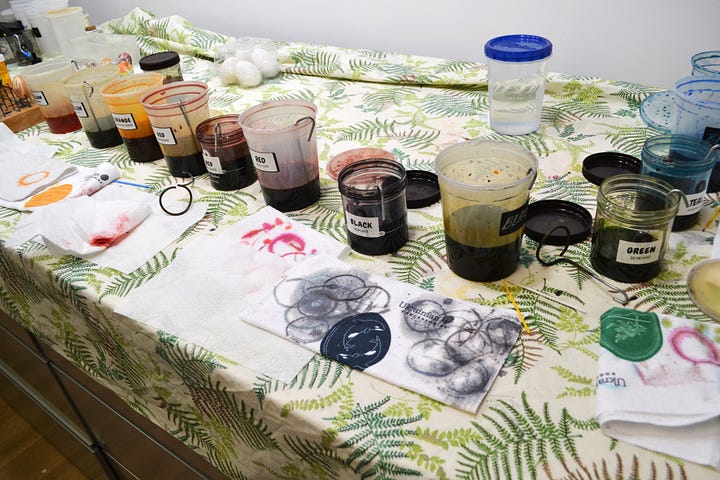
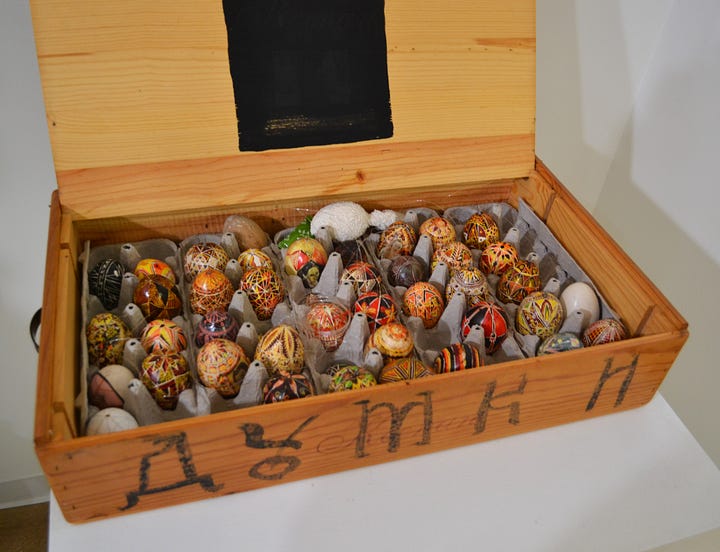
Also in the front room were various visual aids, including toy T-72 tanks. The T-72 is a Cold War era tank that Russia is using (and to an extent Ukraine, although thanks to Western countries, Ukraine has a lot more sophisticated equipment than Russia.) According to an article in The National Interest from April, Russia has lost something like 1200 T-72 tanks over the course of the war, out of about 25,000 T-72s built since the tank was introduced in 1971.
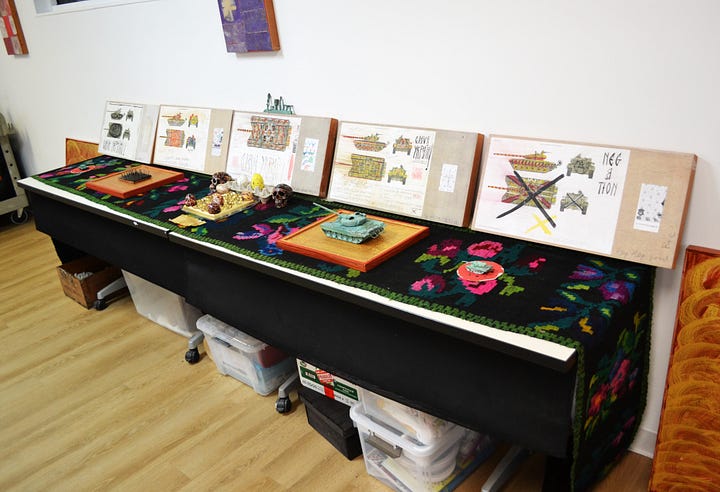
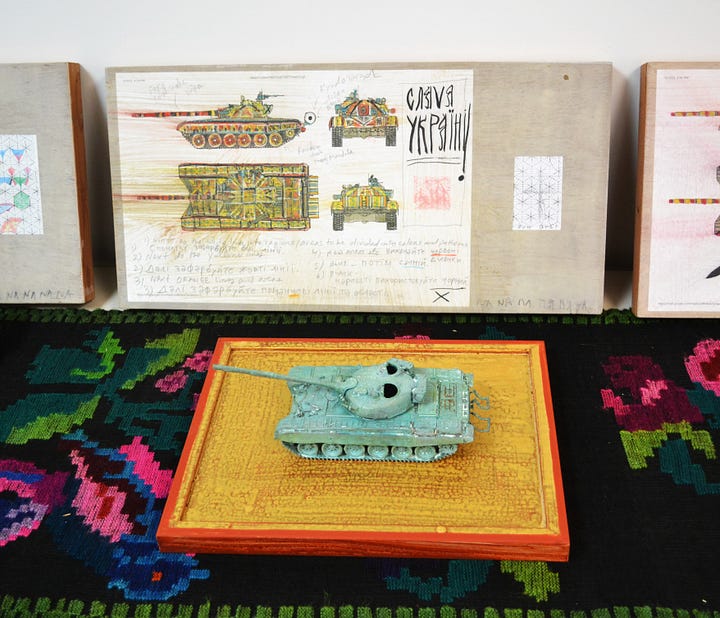
Also in this room were several large abstract paintings, which continued into the next room, where the party was happening.
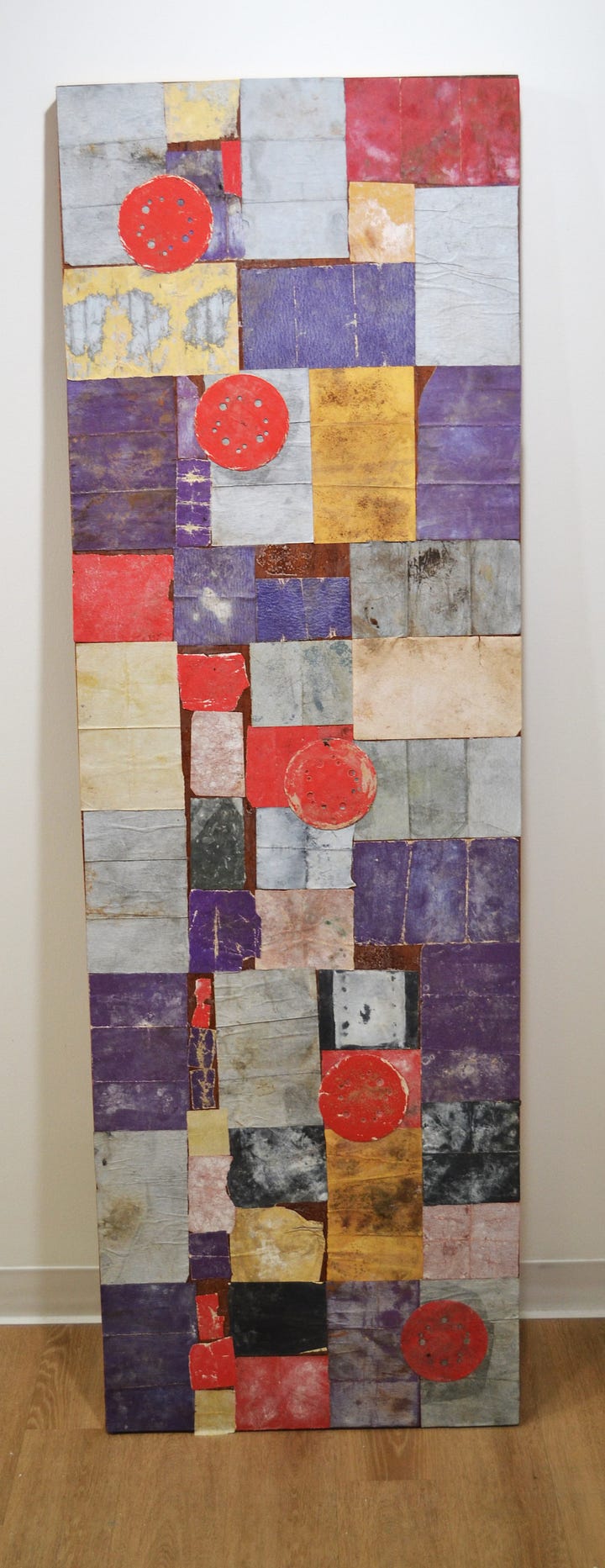
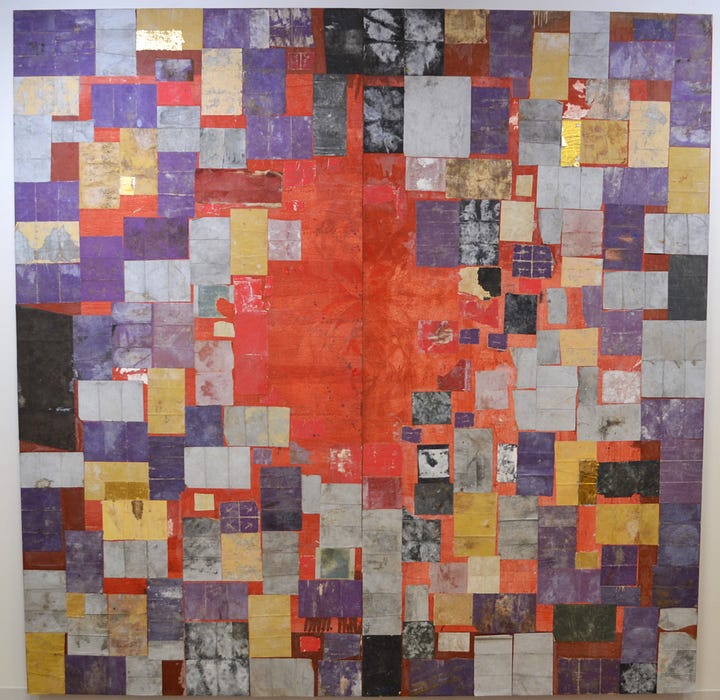


These works consist or irregular rectangles of different colors and red circles. Topchy told me that he initially thought of including the toy tanks on these pieces but that he decided that it would be too much. I found this proposal a little confusing until he told me what was being depicted here, These rough, irregular grids were meant to represent the sight of farm fields as seen from the air. The red circles are bombsites.
In the early 2000s, Topchy strove to combine the two Slavic arts of pysanky and icon painting in one art object by attaching pysanky eggs to icons, as in St. Nickolai with Pysanka.

This combination doesn’t quite work. The two parts don’t really go together. It doesn’t feel like a single artwork. But with the series of pysanky-icons shown at PAC art, Topchy has successfully combined two very different types of art into a single object.
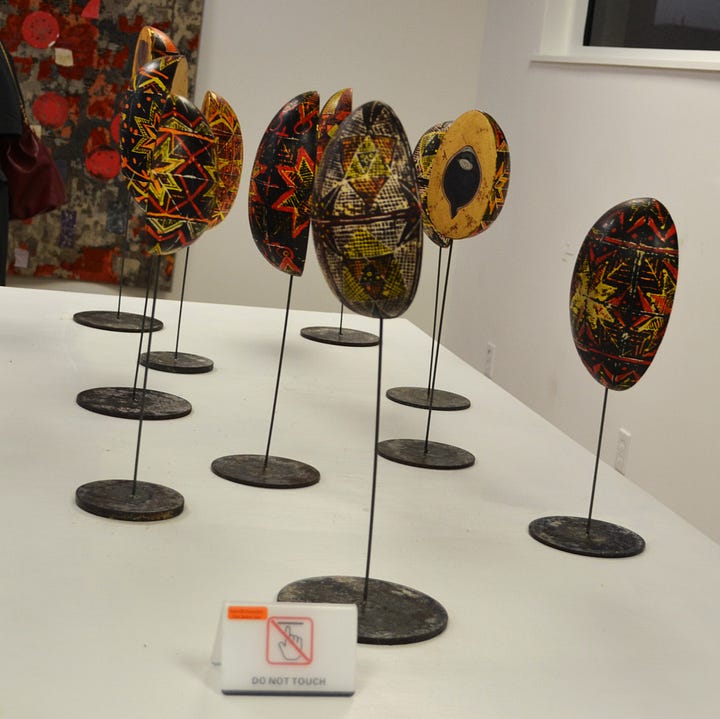
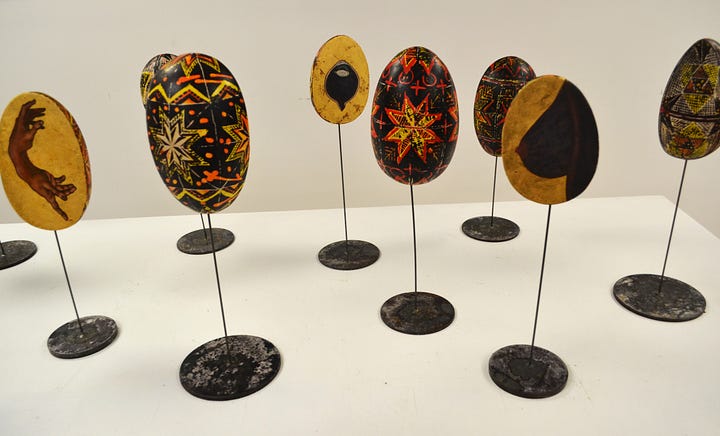
Now instead of portraits from the art world, Topchy uses his gold-leafed icon technique to depict body parts. I can’t quite express why this seems right.
Topchy started off making giant spherical paintings. The more I think about them, the more they seem like gigantic post-modern pysanky eggs.
The picture above is from TemplO in 1996 where Topchy produced spherical paintings. Feels a little grander than a pysanky workshop, but similar—an artist or artists delicately applying paint to a sphere-ish object. Topchy may be a contemporary artist working in contemporary media, but he has been a Ukrainian artist all along.
[Please consider supporting this publication by becoming a patron, and you can also support it by patronizing our online store. And one more way to support this work is to buy books through The Great God Pan is Dead’s bookstore. ]





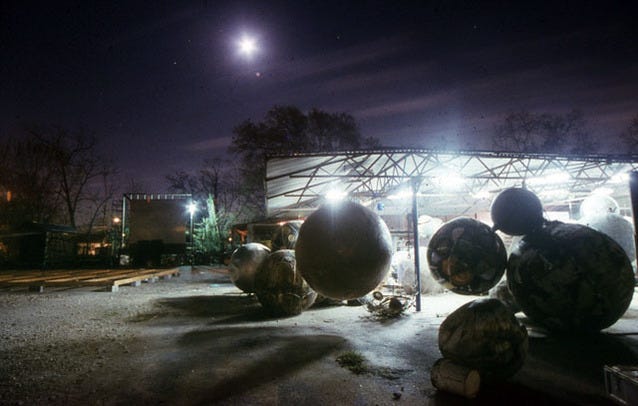

Thanks. Happy to catch up with Nestor’s work and hear about PAC residency.